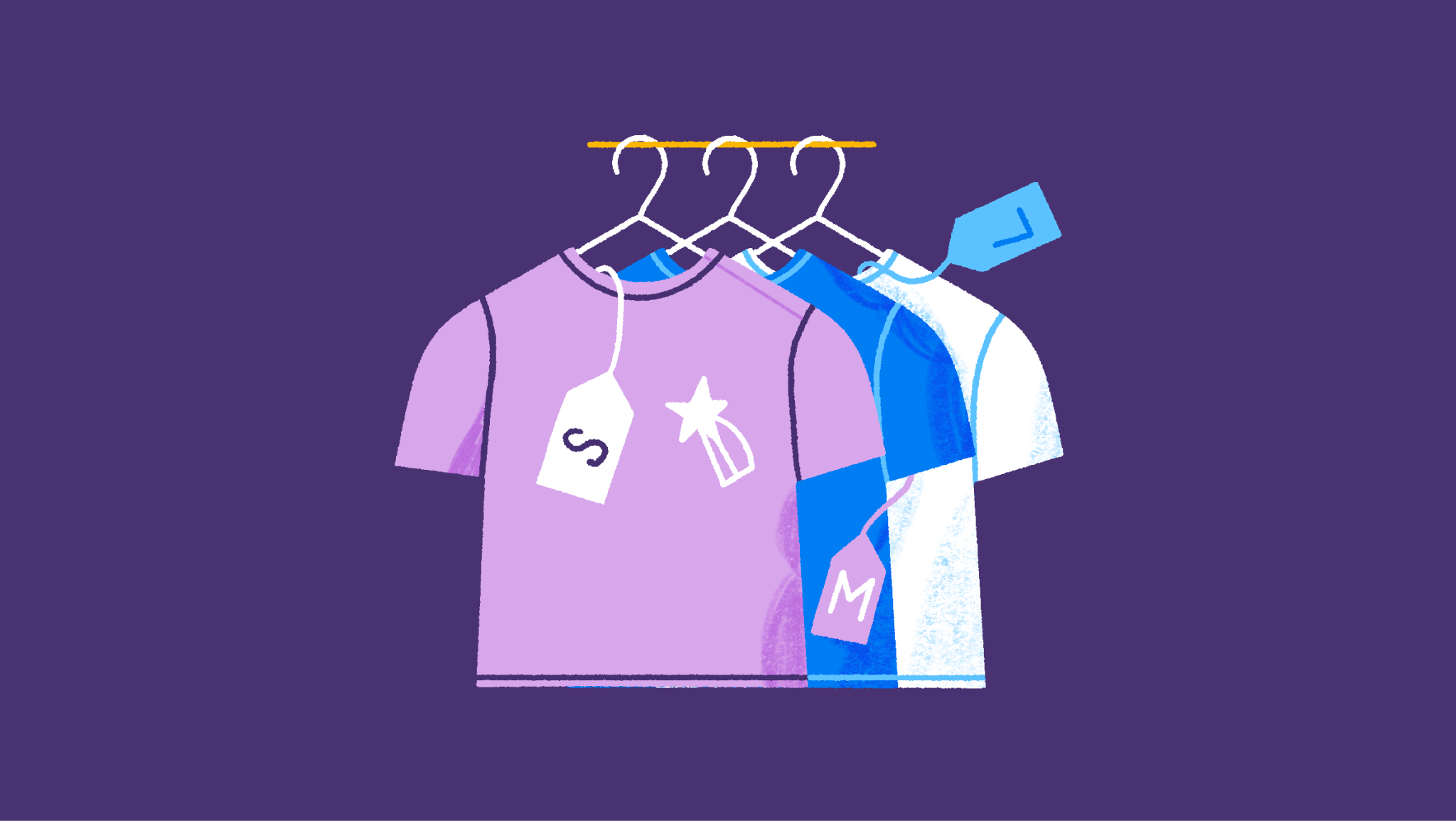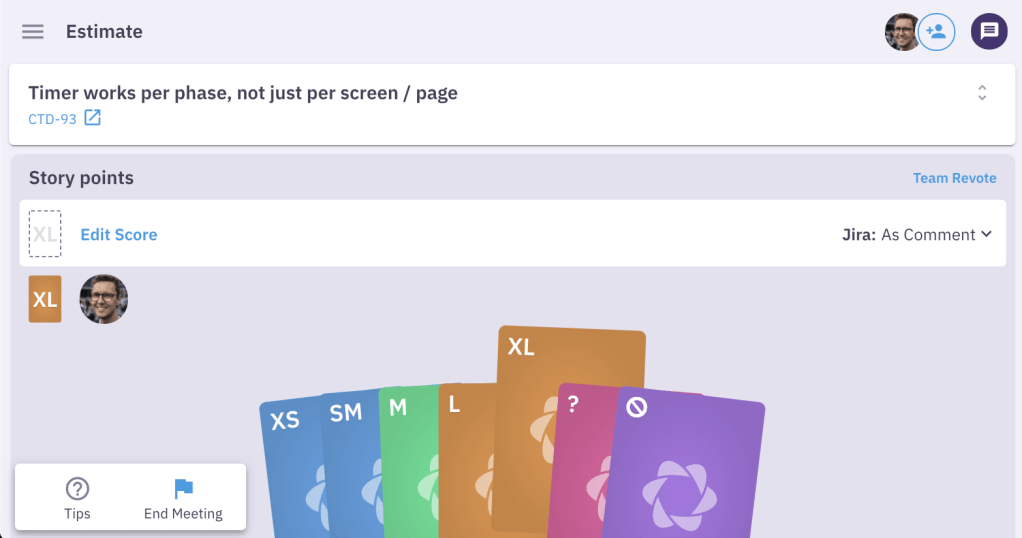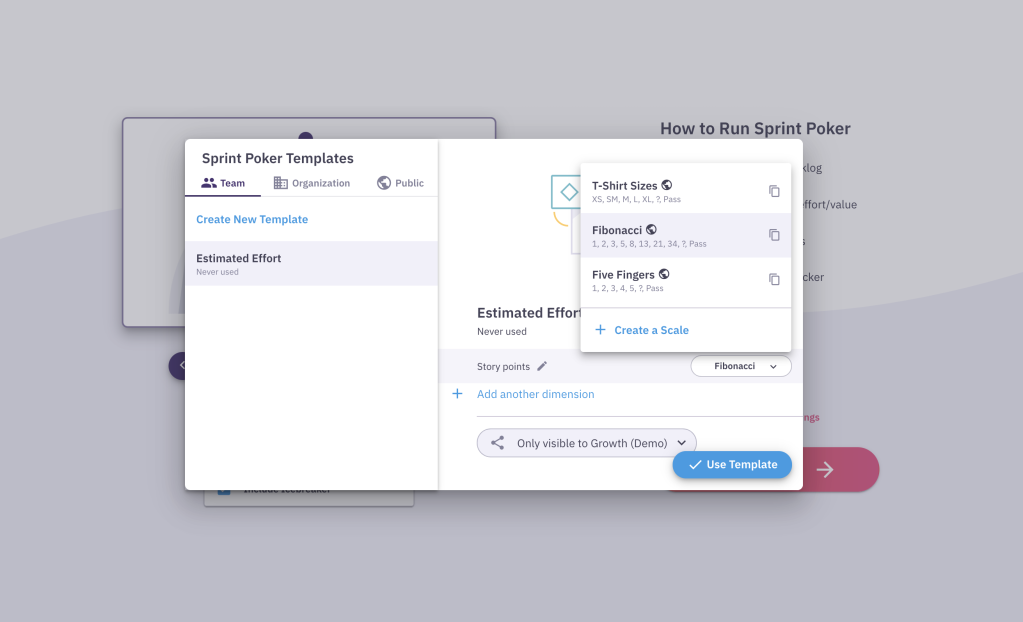T-Shirt Sizing
Make sure your stories are well-dressed

Find the right fit with T-Shirt Sizes
Everyone knows at least their own t-shirt size, and that’s what makes the T-Shirt Sizing story points scale so effective.
There’s already a mental shorthand in everyone’s mind, you know your shirt size, and you can imagine what one or two sizes up might be, or even how they might fit.
With the T-Shirt Sizing scale, you’ll “dress” your user stories, to make sure they’re all wearing the right size.
As the name implies, this agile estimation technique uses t-shirt sizes: Extra Small, Small, Medium, Large, Extra Large or S, M, L, XL.
In Sprint Poker the abbreviated t-shirt sizes appear on your hand of cards, starting at XS and going up to XXL. You’ll also have two additional cards – a question mark and a pass card (more on those later).

Why use the T-Shirt Sizing scale?
The strengths of the T-Shirt Sizing scale are the aforementioned familiarity with shirt sizes everyone has, which makes it a great option for new teams that don’t have much shared context from working together.
If your team is getting lost in the weeds of estimating with numerical values like the Fibonacci sequence, the T-Shirt Sizing scale could help to simplify things a bit.
T-Shirt Sizing injects just a bit of ambiguity into estimating, reflecting the real-life nature of t-shirts. You can use this estimation process to come up with time estimates or to create a rough estimate of the size of work, through a relative estimation process.
If you’ve ever been in a dressing room with two sizes, you know how this sizing goes. The small might technically fit, but everything feels right in the medium.
Expect a lot of discussion as your agile team finds the right “fit” for each task. Once you have a baseline on a few sizes, you’ll be able to size the others more easily by comparing them to each other.
T-Shirt Sizing offers a smooth progression with even spacing as you step in sizes.
In the Fibonacci scale, it might not feel right to bump a 21 to 34, but going from an L to an XL might feel more manageable. If your scrum team could use that kind of fluidity, give T-Shirt Sizing a try.
T-Shirt Sizing in Parabol
To get started with T-Shirt Sizing in Parabol, just select it as your scale when you start a Sprint Poker meeting.
Each member of the meeting will get seven cards. Five of those cards will have shirt sizes, one will be the pass card, and the other is a question mark card.

The pass card is used to essentially sit out this round of estimating. If you’re a Scrum Master facilitating a meeting or a Product Owner that doesn’t want to weigh in, these cards might be helpful. They can also come in handy if there are team members in the meeting that do not work on all tasks. If the task is to launch a page that has already been designed, then the UX writer on the team might not need to participate in sizing that task.
When the question mark card is played, that can mean some team members are stuck. This can happen when there’s not enough information to make an accurate point estimation, or there are too many unknown variables to comfortably play a size card. Expect question mark cards to generate some discussion as you figure out what needs to happen to turn questions into estimates.
In Sprint Poker the development team will import stories from the Jira or GitHub product backlog and start estimating backlog items together. T-Shirt Sizing is a relative estimating process, so you can gradually understand the relative size of an item based on what was rated as small or large in other poker estimation or sprint planning meetings.
When you’re done estimating, Sprint Poker will sync your estimates back to your product backlog with our GitHub or Jira integrations so you can preserve your agile process or workflow.
The T-Shirt Sizing scale is just one of the sizing options you can use with the Sprint Poker tool at Parabol. There’s also the Fibonacci scale and the Five Fingers scale.
Or you can bring your own point values to the poker table, maybe try something like, “capuchin, chimp, orangutan, gorilla, King Kong”? It’s up to you!